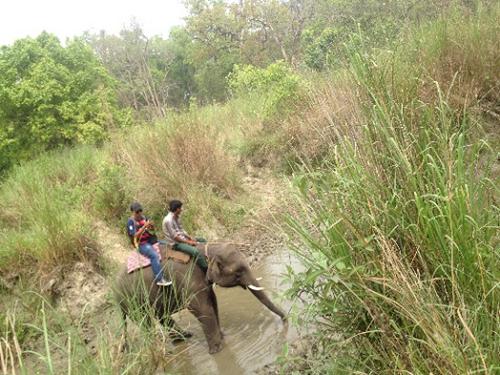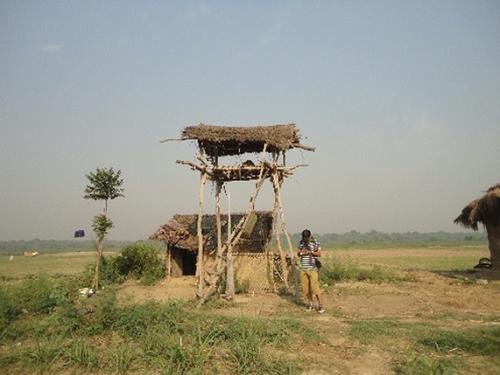Dipesh K.C.
Assessment of LULC pattern over temporal and spatial scales, its impact on HWC, finding existing mitigation measures, causes of LULC change, attitude towards HWC, preparation of HWC interface map by using GPS, RS and GIS techniques, interviews and questionnaire survey, and field observation.

Flowing river inside the park.
Protected areas are the major strategy for biodiversity conservation established with the primary objective of conservation of wild endangered flora and fauna. Till date, protected areas network of Nepal cover 23.23 % of the total land area of the country. But, nowadays, Land Use Land Cover changes have been transforming land cover into agricultural lands, grazing lands and human settlements at the expense of wildlife habitat. Despite the massive conservation efforts backed by significant international support, these changes are associated with loss of wildlife, habitat destruction, land degradation, human-wildlife conflicts and corridors blockages (Maitima et al., 2009). Human-wildlife conflict is a present major threat to survival of many wildlife in different parts of the world. At the same time, it has also become a significant threat to local people. The appropriate solutions to minimize such conflicts are necessary; otherwise local support for conservation may decline in the near future.

Temporary house and guarding place.
Thus, an assessment of Land Use Land Cover change pattern over temporal and spatial scales, its impact on HWC, preparation of HWC interface map by using GPS, RS and GIS techniques, interviews and questionnaire survey, and field observation will contribute the local support and participation in sustainable protected area management and make local people aware to implement the mitigation measures and existing policy provision of Wildlife Damage Relief Support Guidelines-2015 in order to create harmony and ensure human-wildlife co-existence in the Suklaphanta Wildlife Reserve and its Buffer Zone, Nepal where it consists of grassland; wetland and mixed forest that create a mosaic of wildlife habitats supporting many wildlife species. Secondary data will be collected from different relevant sources like wildlife reserve office, BZUCs, BZUGs, VDCs, DNPWC, DFO and various published and unpublished literature. Internet sources and different libraries will be consulted. The result obtained through analysis process will be compared to see whether difference in the mean of LULC change differs significantly or not in that time period. Chi-square test will be applied to analyze LULC impact on HWC through SPSS 20 software at 10% level of significance. Co-relation coefficient, regression and simple statistics like mean, median, standard error and standard deviation will be used to interpret the data.